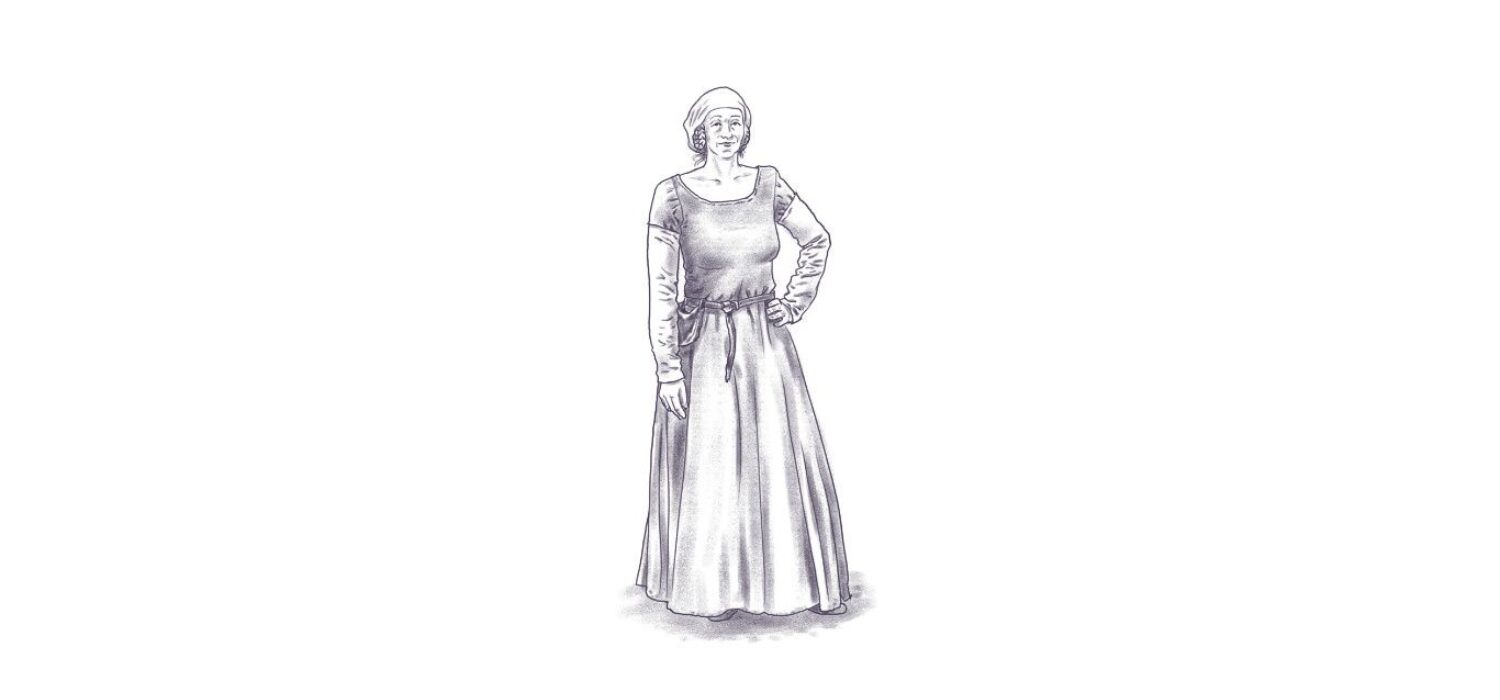Meet Gyda
Meet Gyda
We call her Gyda, a common woman’s name in Stavanger at the time.
Her skeleton emerged during an archaeological excavation in the cathedral in 1967, and we know nothing about her beyond what we can read from her bones.
The examinations conducted by the Archaeological Museum in Stavanger reveal that the person is a woman and that she was around 50 years old when she died. Fifty years was a high, but not unusual, age for people in the Middle Ages—a time when the oldest lived up to about seventy years.
What was Gyda’s life like?
Childhood was brief. As soon as she was able to perform practical tasks, she became part of the family’s workforce. And she likely didn’t stay with her parents and siblings for long either. Perhaps she was married off as early as twelve years old?
If Gyda was representative of women in the Middle Ages, she bore many children. Bearing children was a continuous process in older times, not unlike what we associate with the animal kingdom today. This means that Gyda gave birth regularly throughout her fertile years, around 10-12 births. However, only a few of the children lived to be older than five years.
Both of Gyda’s shoulders show clear signs of wear. These must have been caused by large, repetitive arm movements. In addition, she shows a lot of wear on her right shinbone. The injuries must have come from performing the same activity, day after day, year after year. In other words, it must be related to a profession. Among common professions in medieval Stavanger, none fits these movements better than weaving.
The so-called vertical loom, used in Norway until modern times, made weaving a heavy and physically demanding profession. The weaver was forced to stand upright all day and adopt several uncomfortable positions. Nevertheless, weavers were a respected profession. It was a specialised craft that required long training.
In the early Middle Ages, it was common for people to weave their own clothes, but gradually it became a profession where one earned money by weaving for others. That a craft like weaving became professionalised must be seen in light of Stavanger becoming a settlement. In that sense, Gyda could be an example of one of our first specialised town dwellers, along with stonemasons, painters, carpenters, woodcarvers, and blacksmiths.
